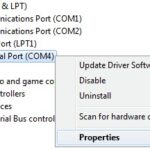The KW808 OBD2 Scanner is a popular entry-level diagnostic tool designed to help vehicle owners understand and address their car’s problems without immediately resorting to professional mechanic services. Marketed for its ease of use and broad compatibility, this scanner aims to empower users to diagnose issues themselves, potentially saving time and money on car repairs. This review will delve into the features, functionalities, and overall value proposition of the KW808 OBD2 Scanner to help you determine if it’s the right tool for your automotive diagnostic needs.
One of the primary selling points of the KW808 is its wide vehicle compatibility. It’s designed to work with most vehicles manufactured from 1996 onwards in the US, 2003 for EU-based cars, and Asian vehicles that are OBDII compliant, including both domestic and imported models. This broad compatibility extends to passenger cars, SUVs, and light trucks, ensuring that a wide range of vehicle owners can utilize this device. Supporting all OBDII protocols, the KW808 aims to be a universal solution for basic car diagnostics.
Using the KW808 is designed to be straightforward. The device operates on a plug-and-play principle, requiring no batteries or complicated software installations. Users simply plug the scanner into the OBD II port of their vehicle, turn the ignition on, and the device is ready to use. This ease of use makes it accessible even for those with limited technical expertise in car mechanics.
A significant feature of the KW808 OBD2 Scanner is its built-in lookup library, containing over 8,000 generic code definitions. This extensive library helps users accurately identify the meaning of diagnostic trouble codes (DTCs) that trigger the Check Engine Light (MIL). By providing clear definitions, the scanner assists users in understanding the potential causes of engine problems, enabling them to make informed decisions about repairs, possibly even fixing minor issues without needing to visit a dealer or mechanic.
Beyond basic code reading, the KW808 is equipped to assist with vehicle emissions testing, which is a crucial aspect of vehicle maintenance and legal compliance in many regions. The scanner can help users prepare for and pass annual emissions tests and SMOG checks by displaying the monitor and I/M readiness status. This feature allows users to proactively ensure their vehicle meets emission standards, potentially avoiding failures and the associated repair costs.
The KW808 covers comprehensive OBDII/EOBD diagnostic functions specifically for the engine system. It supports essential tests like the O2 sensor test, EVAP system test, and on-board monitoring test. These tests provide users with a detailed overview of their vehicle’s running status, helping to pinpoint potential issues related to emissions, fuel efficiency, and engine performance.
Furthermore, the KW808 features a graphical and numeric live data stream display. This function is invaluable for real-time monitoring of vehicle sensors and components. By displaying live data, the scanner aids in identifying faulty sensor readings, giving users concrete data to understand intermittent problems or confirm the source of a persistent issue. This live data stream is crucial for diagnosing complex problems that are not immediately apparent from static code readings.
Key Functions of the KW808 OBD2 Scanner:
-
Broad Vehicle Compatibility: Works with all 1996 and later OBDII compliant vehicles from the US, Europe, and Asia, ensuring extensive coverage for various car brands and models.
-
Retrieves Diagnostic Codes: Accurately retrieves both generic (P0, P2, P3, and U0) and manufacturer-specific (P1, P3, and U1) Diagnostic Trouble Codes (DTCs), providing a comprehensive fault code reading.
-
Check Engine Light Diagnosis: Easily determines the cause of the Check Engine Light (MIL), helping users understand why the light is illuminated and what potential problems exist.
-
Emissions Readiness Status: Displays monitor and I/M readiness status, crucial for ensuring your vehicle is ready for emissions testing.
-
Data Review Capability: Features memory and battery backup for off-vehicle data review and analysis, allowing users to examine diagnostic information even away from the car.
-
CAN and OBDII Protocol Support: Supports CAN (Controller Area Network) and all other current OBDII protocols, ensuring compatibility with modern vehicle communication systems.
-
Built-in DTC Lookup Library: Comes with an integrated OBD-II DTC lookup library, eliminating the need for manual code lookups and speeding up the diagnostic process.
-
On-Screen DTC Definitions: Displays DTC definitions directly on the unit screen, providing immediate and clear explanations of error codes without needing external devices or manuals.
-
Live O2 Sensor Test Data: Displays live O2 sensor test data, enabling users to monitor the performance of oxygen sensors in real-time, which is vital for fuel efficiency and emissions control.
-
Large Backlit LCD Screen: Equipped with a large, easy-to-read backlit LCD screen, making it simple to view test results and navigate the scanner’s interface even in poorly lit conditions.
-
Multilingual Support: Supports multiple languages including English, French, German, Dutch, Spanish, Portuguese, and Russian, catering to a diverse user base globally.
Conclusion:
The KW808 OBD2 Scanner presents itself as a user-friendly, feature-rich, and broadly compatible diagnostic tool, particularly suitable for car owners who are new to automotive diagnostics or prefer a straightforward device for basic to intermediate level troubleshooting. Its extensive vehicle compatibility, ease of use, and comprehensive functionalities like code definitions, emissions testing support, and live data streaming make it a valuable tool for DIY car maintenance. For those seeking an affordable and effective OBD2 scanner to understand their vehicle’s health and potentially perform repairs themselves, the KW808 OBD2 Scanner is definitely worth considering. It empowers vehicle owners to take a more proactive role in vehicle maintenance, potentially saving money and increasing their understanding of car mechanics.
